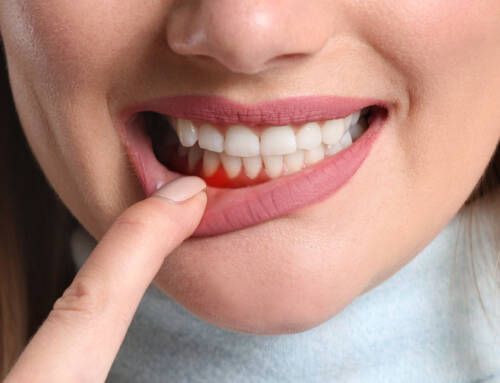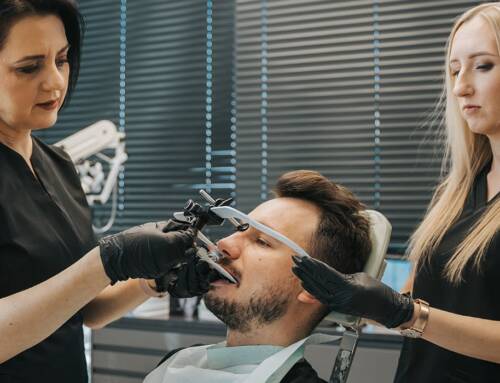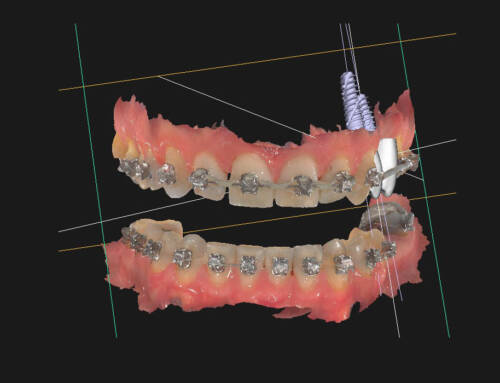Full-contour prosthetic crowns made of zirconium oxide (so-called full contour) are one of the most modern solutions in dental prosthetics. Natural appearance, durability, high strength, precision and speed of execution make them a great alternative to other materials and types of prosthetic crowns used so far.
A prosthetic crown is one of the most commonly used solutions in dentistry. This effective way of rebuilding the function and aesthetics of the tooth is most often used when the tooth is seriously damaged or missing. Crowns can be embedded both on the natural root of the tooth and on an implant (so-called implant crown). Prosthetic crowns are made of various materials, and the choice of material depends on many factors, such as the location of the tooth, aesthetic considerations, and the patient's budget.
Types of prosthetic crowns
Individual types of crowns differ in construction, physical properties, aesthetics and price. When deciding on a prosthetic crown at the dentist's, it is worth knowing what material and in what technology it will be made. Depending on the materials used in their manufacture, crowns are divided into the following types:
- Monolithic crowns (uniform, full-contour):
- all-ceramic, e.g. made of glass ceramics based on lithium disilicate (e-max), feldspar ceramics (mark II) or zirconium oxide (zirconia)
- rarely used metal crowns today (e.g. made of gold)
- compound crowns:
- porcelain (feldspar or disilicate-lithium ceramics) on a metal foundation (ceramic-metal crown)
- porcelain on a zirconia foundation (all-ceramic crowns)
All-ceramic crowns are the most aesthetic prosthetic restorations, they transmit and reflect light best, giving a translucency effect similar to a natural tooth. Many types of ceramics are used in dentistry, including porcelain.
Layered crowns (on the foundation) are a structure consisting of an internal foundation on which porcelain is layered to achieve an optimal visual effect.
Zirconia - a material for the 21st century
In my many years of professional practice, I had the opportunity to work with various types of prosthetic crowns. Based on experience and following the latest achievements in dentistry, including the development of CAD / CAM technology and other digital dentistrytools , I paid particular attention to zirconia. Zirconium oxide has been used in dentistry since the 1970s, and the indications for its use are constantly expanding. Thanks to its unique properties and scientific progress, this material has gained widespread use in dental prosthetics in recent years, gaining recognition among doctors and patients.
Pure zirconium as an element belongs to the group of metals, and as an oxide it has a polycrystalline form. It is a ceramic material with high resistance to bite forces - it can withstand loads of up to 2500 NIn addition to excellent strength parameters, it is characterized by high biocompatibility (non-allergic) and aesthetics (naturally white color, high translucency). Its compatibility is conducive to oral hygiene and prevention of periodontitis. The high hardness and density of the material results in incredible resistance to mechanical factors, discoloration and abrasion.
Until recently, zirconium oxide was mainly used as a foundation for porcelain crowns. However, it turned out that quite often the porcelain covering this metal cracked and chipped. Thanks to modern zirconium oxide blocks and CAD/CAM technology, the problem has been eliminated. Today, full-contour (monolithic) full-ceramic prosthetic crowns with excellent strength and aesthetic properties are made of zirconium oxide. Until now, perceived primarily as a construction material, zirconium oxide has become a good alternative to layered crowns. It gives the possibility of making homogeneous crowns without external veneering. Research (e.g. conducted at the University of Bergen) confirmed the higher strength of monolithic crowns compared to those made of zirconia veneered with porcelain. Full contour crowns also eliminate the problem of dark edges near the gums, which are often visible in the case of crowns on a metal foundation.
Advantages of full contour crowns
With proper occlusion, full-contour zirconia restorations (both crowns and bridges) can be a lifetime investment. Important factors in favor of their use are, apart from durability and aesthetics, also shortening of clinical and laboratory procedures. So the speed of execution, and an attractive - compared to traditional crowns - price. An absolute indication for the use of this type of crowns is an allergy to metal. It is also worth noting that the "full contour" crowns are also characterized by very precise workmanship. Because they are created thanks to the work of man and computer, which I will write about in the next article.







Leave A Comment